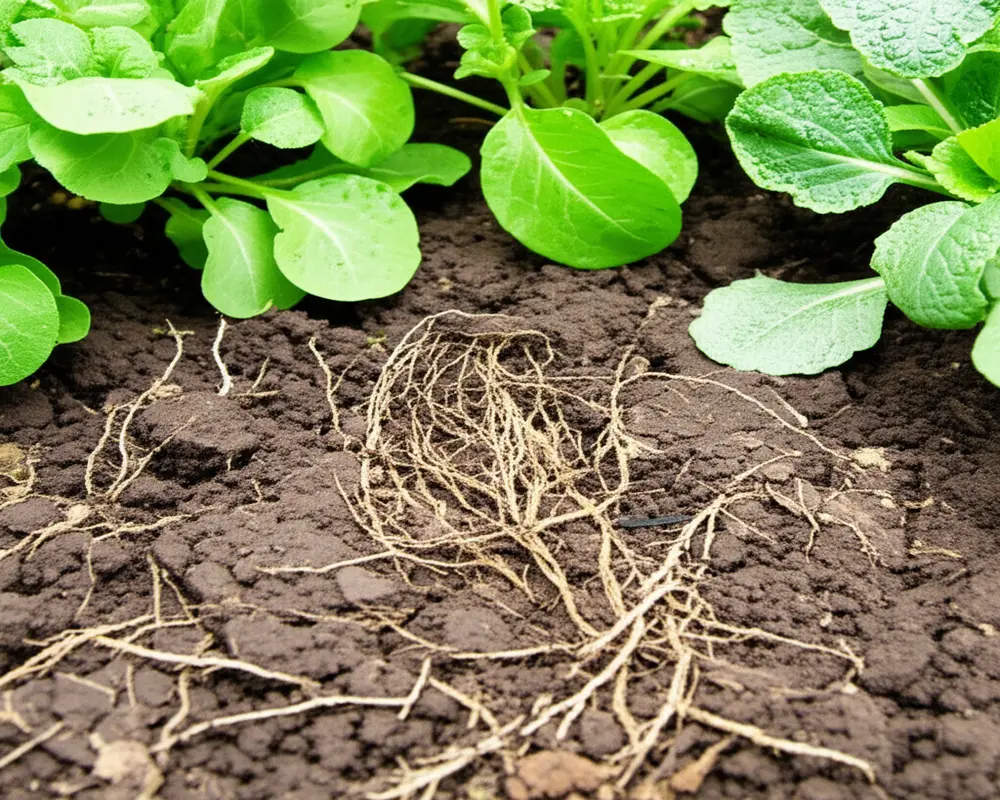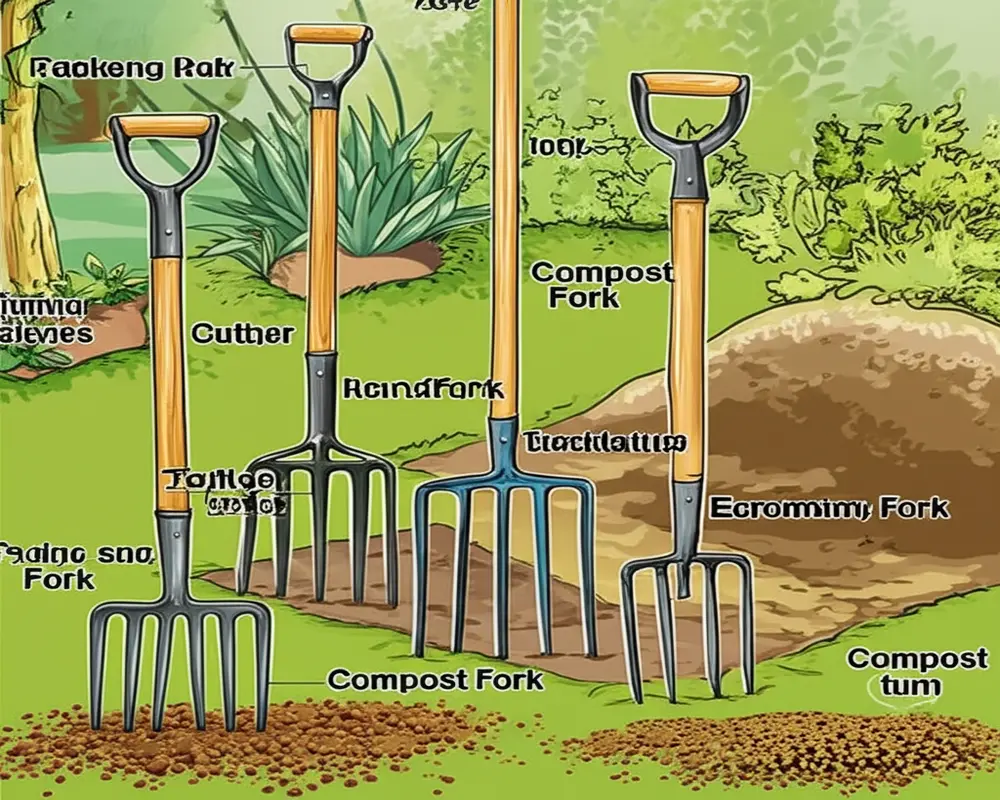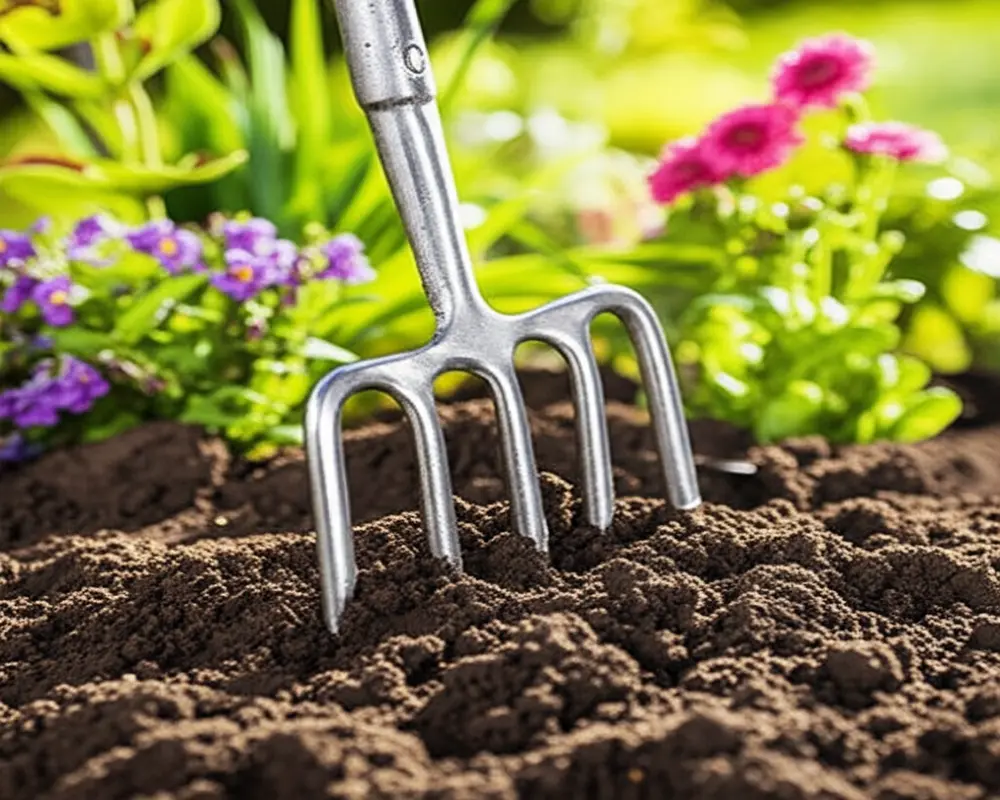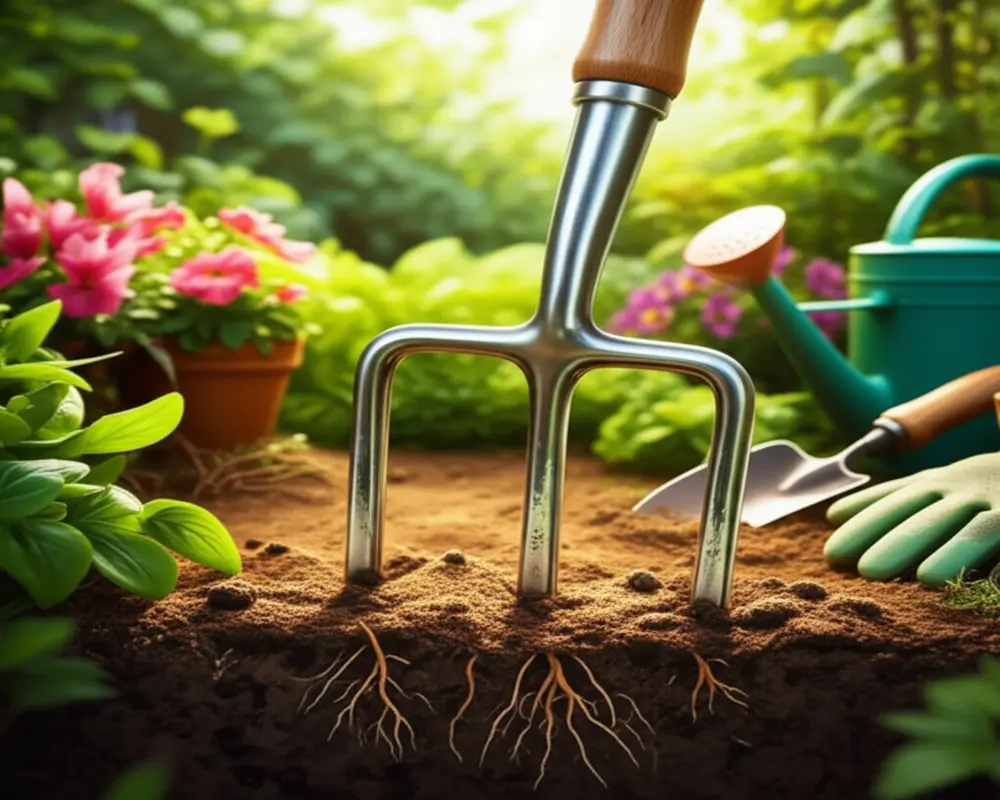Garden Fork Soil Aeration: How to Use for Healthy, Aerated Soil
Garden soil health is often challenged by soil compaction, leading to poor drainage, stunted plant growth, and water pooling. Aeration using a garden fork offers a simple yet effective solution to these problems. This guide delves into the science behind soil compaction, the benefits of garden fork soil aeration, the best timing to aerate, the types of garden forks suitable for the task, and expert tips to enhance your garden’s vitality.
Understanding Soil Compaction: Why Aeration is Crucial for Your Garden
Soil compaction occurs when soil particles are pressed together, reducing pore space. This condition is commonly caused by frequent foot traffic, heavy rain, or the use of machinery. Compacted soil exhibits signs such as a hard surface, poor drainage, water pooling after rain, and plants showing signs of stress like stunted growth.
Scientifically, compacted soil limits oxygen availability to roots and soil microorganisms. The lack of air pockets restricts root expansion and diminishes the uptake of water and essential nutrients. By aerating the soil with a garden fork, you increase pore space, thereby enhancing oxygen flow, water infiltration, and nutrient absorption. This improves root development and promotes a flourishing ecosystem of beneficial soil life.

The benefits of garden fork aeration extend beyond just improved root systems. It revitalizes soil structure, supports microbial activity, and facilitates moisture movement, which collectively boost overall garden productivity.
When to Aerate Your Garden Beds with a Fork
Optimal soil aeration is most effective during spring and autumn when temperatures are mild and soil moisture is balanced. Moist soil that is neither dry nor saturated is ideal for manual aeration. Before starting, test soil moisture by squeezing a handful; it should hold shape without dripping water.
Look for signs indicating the need for aeration—persistent water pooling, difficulty digging, runoff on slopes, and garden beds with weak plant growth. Addressing these signs promptly through aeration will support healthier plant development.
Choosing the Right Garden Fork for Soil Aeration
Garden fork types vary based on design and function. The digging or spading fork is most suited for aeration, featuring sturdy, forged steel tines designed to penetrate and loosen soil.
For tighter spaces, a border fork offers a lighter, smaller alternative, facilitating soil aeration where larger forks may be cumbersome. Other forks like potato or compost forks are generally less suitable for aeration tasks due to tine shape or strength.

Key features to consider include forged steel tines for durability, comfortable handles (such as D-grip or T-grip styles), and overall tool balance for ease of use. In comparison, garden forks are manual and precise, whereas broadforks cover larger areas with less soil disturbance, and mechanical core aerators offer professional-grade efficiency for lawn aeration.
Step-by-Step Guide: How to Aerate Garden Soil with a Fork
Begin by clearing your garden bed of debris and watering the soil lightly if it is dry. Follow these steps to aerate effectively:
- Insert the fork vertically into the soil to the full depth of the tines (usually about 8-12 inches).
- Gently wiggle the fork to create air channels without turning the soil over.
- Pull the fork straight out to form a clean hole.
- Space each insertion 6 to 12 inches apart in a grid pattern to ensure comprehensive aeration.
- Work progressively area by area across your garden bed.

Maintain proper body mechanics: bend your knees, keep your back straight, and use your legs for leverage. Taking regular breaks helps prevent fatigue during the task.
Optimizing Your Technique & Avoiding Common Mistakes
Effective aeration depends on soil moisture and targeted action on compacted zones. Avoid working in overly dry or saturated soil, as it can cause further compaction or damage. Focus on depth adjustments based on root growth depths and avoid fully inverting the soil, especially in no-dig gardens, to preserve soil ecology.
Common errors include aerating when the soil is too wet or dry, over-turning the soil, and damaging plant roots by inserting the fork too close. Ignoring signs of compaction or neglecting tool maintenance, such as rust prevention and tine sharpening, can also reduce the efficiency of soil aeration.
What to Do After Aerating: Maximizing the Benefits
Post-aeration practices amplify the positive effects on your garden. Apply organic matter such as compost into the holes created by fork punctures. This enriches soil fertility and encourages microbial activity. Follow with light watering to aid in settling the soil and distributing amendments.
Adding mulch afterward helps retain moisture, suppress weeds, and reduces soil compaction caused by rainfall and foot traffic.
Integrating Garden Fork Aeration into Your Gardening Routine
The frequency of aeration depends on soil condition, garden use, and plant requirements—typically once or twice a year suffices. Proper care for your garden fork ensures longevity: clean dirt from tines after use, sharpen edges periodically, and store the tool in a dry place to prevent rust.
Soil aeration differs between raised beds and in-ground planting areas, as does concern for plant root characteristics. For example, deep-rooting plants benefit from deeper aeration techniques.
FAQs: Your Garden Fork Aeration Questions Answered
- Can a garden fork aerate lawns?
- Yes, a garden fork can be used to aerate small lawn areas by creating air channels; however, specialized lawn aerators may be more efficient for large lawns.
- Is over-aeration possible?
- Excessive aeration can disturb soil structure and damage roots. Aerate only when signs of compaction appear or as part of annual garden maintenance.
- How deep should the fork go?
- Typically, the fork should penetrate 8 to 12 inches (20 to 30 centimeters) to effectively break compacted layers without harming roots.
- Will aeration harm plant roots?
- When done correctly, aeration improves root health. Avoid inserting the fork too close to plant bases to prevent root damage.
- What are signs soil needs aeration?
- Indicators include water pooling, hard soil surfaces, difficulty digging, runoff, and poor plant growth.
Conclusion: Empower Your Garden with the Simple Power of a Garden Fork
Garden fork soil aeration is a straightforward, low-cost method to combat soil compaction and enhance garden soil health. By improving oxygen flow, water penetration, and nutrient uptake, aeration encourages robust roots and thriving plants. With the right tools and timing, you can easily incorporate this practice into your gardening routine for sustained soil vitality.
Explore expert advice on tool care and soil management for the best results. Begin your journey towards healthier garden soil today by trusting the simple yet powerful garden fork.
For detailed insights on maintaining your garden fork and related tools, consult our garden fork rust prevention guide.
Further authoritative guidance on soil aeration can be found on the Royal Horticultural Society website and practical tips at Almanac.

